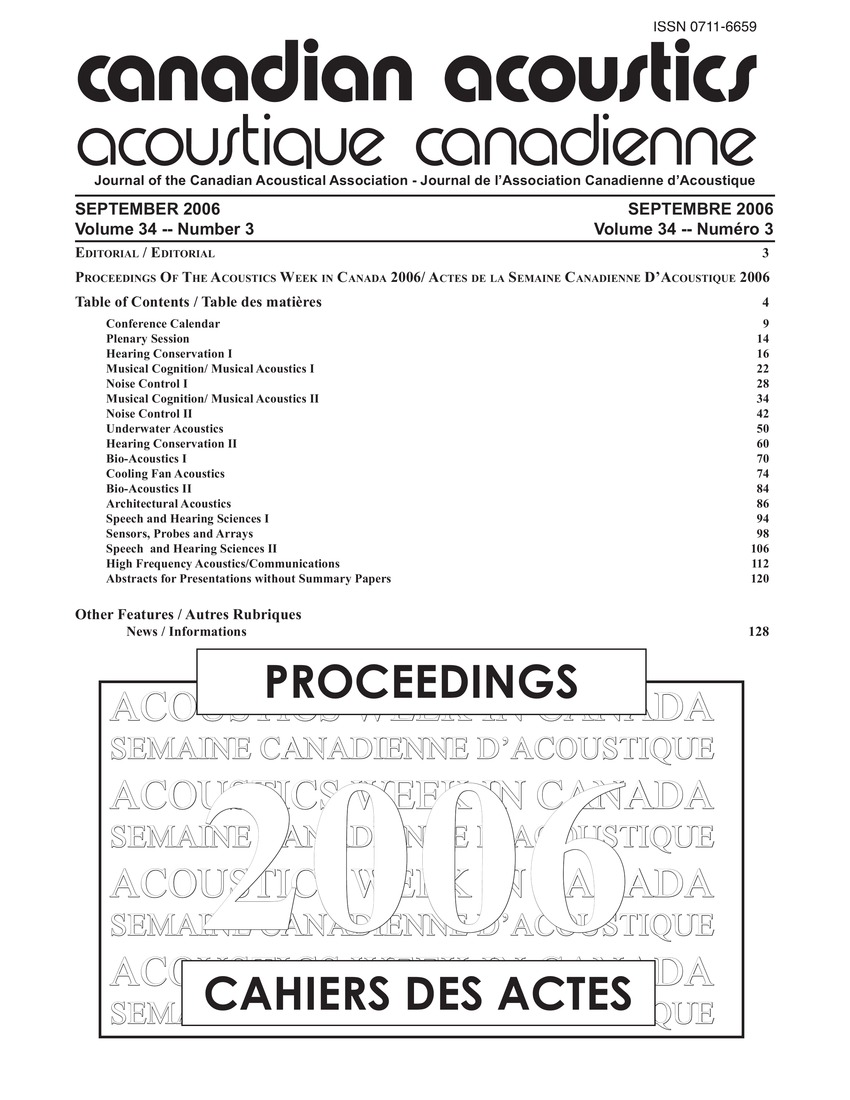Automated detection of white whale (delphinapterus leucas) vocalizations in St. Lawrence estuary and occurrence pattern
Keywords:
Acoustic signal processing, Acoustic surface wave filters, Acoustic wave propagation, Algorithms, Data recording, Speech analysis, Image filters, Signal processing algorithms, White whalesAbstract
A detailed behavioral and habit study on the vocalization of the white whale population, is presented. White whales are known for their high degree of acoustic activities and their vocalization are variable in time and frequency. An automated method using a sequence of signal processing algorithms is developed to detect sound of white whale. A threshold is applied to transform the spectrogram into a binary image on which residual noise is cleaned using two specific image filters. The frequency band of the vocalizations is relatively stable over the seven days of sampling, while the vocalization rate is variable from day to day. This method can detect all the diverse white whale calls and pulsed tones emerging in the signal after noise filtration. The vocalization rate intensity of the false detections is very low compared to that of the detected calls. The prime frequency band used by white whales in recorded data is slightly lower than the estimated frequency rate.Additional Files
Published
How to Cite
Issue
Section
License
Author Licensing Addendum
This Licensing Addendum ("Addendum") is entered into between the undersigned Author(s) and Canadian Acoustics journal published by the Canadian Acoustical Association (hereinafter referred to as the "Publisher"). The Author(s) and the Publisher agree as follows:
-
Retained Rights: The Author(s) retain(s) the following rights:
- The right to reproduce, distribute, and publicly display the Work on the Author's personal website or the website of the Author's institution.
- The right to use the Work in the Author's teaching activities and presentations.
- The right to include the Work in a compilation for the Author's personal use, not for sale.
-
Grant of License: The Author(s) grant(s) to the Publisher a worldwide exclusive license to publish, reproduce, distribute, and display the Work in Canadian Acoustics and any other formats and media deemed appropriate by the Publisher.
-
Attribution: The Publisher agrees to include proper attribution to the Author(s) in all publications and reproductions of the Work.
-
No Conflict: This Addendum is intended to be in harmony with, and not in conflict with, the terms and conditions of the original agreement entered into between the Author(s) and the Publisher.
-
Copyright Clause: Copyright on articles is held by the Author(s). The corresponding Author has the right to grant on behalf of all Authors and does grant on behalf of all Authors, a worldwide exclusive license to the Publisher and its licensees in perpetuity, in all forms, formats, and media (whether known now or created in the future), including but not limited to the rights to publish, reproduce, distribute, display, store, translate, create adaptations, reprints, include within collections, and create summaries, extracts, and/or abstracts of the Contribution.


